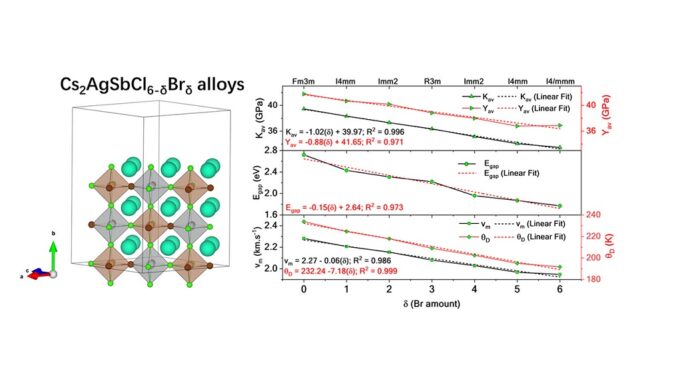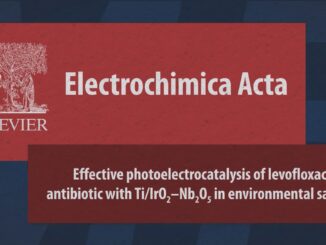
Exploring the Halide Exchange Engineering on Lead-free Cs2AgSbCl6−δBrδ Mixed-Halide Double Perovskite: A DFT Study
Abstract: In recent years, solar energy has emerged as a promising alternative to conventional fossil fuels, offering a sustainable and inexhaustible energy source. (1) This development has spurred advancements in photovoltaic technology aimed at efficiently harnessing the solar energy spectrum within economically viable and environmentally sustainable systems. (2,3) Although silicon-based solar cells contributed to the early development of solar energy, they are still considered relatively inefficient due to production problems and inefficiency in the energy conversion rate. (4,5) Consequently, there has been a growing effort to explore alternative novel photovoltaic materials that are cost-competitive and environmentally friendly. (6−8) The efficiency of perovskite-based solar modules has increased significantly in the past decade (i.e., with an area up to 0.1 cm2), which in 2009 was ∼3.8% and in 2021 ∼25.7%. (9,10)One of the most promising compounds commonly studied in optoelectronic applications are halide perovskites ABX3, (11)(11) where A+ represents a monovalent cation (which can be a monovalent metal or an organic molecule), B2+ is a divalent cation, and X– a halide (such as Cl–, Br–, or I–). (12) The most reported halide perovskites have Pb2+ ions occupying the B site, but Pb-based solar cells present challenges related to stability and toxicity. (13−15) Therefore, the Pb2+ replacement with homovalent elements (e.g., Sn, Ge, and others) and heterovalent elements (such as Bi3+, Sb3+, In3+, Ag+, and Cu+), (16−20) with general formula A2B′B″X6, where B′ are trivalent and B″ monovalent cations, respectively, has been investigated. (20) A2B′B″X6 perovskites are also known as “elpasolite,” named after the mineral K2NaAlF6. (21)(21) The ABX3 and A2B′B″X6 halide perovskites structures and their representative octahedra are represented in Figure 1. The cubic ABX3 perovskite comprises a three-dimensional lattice of corner-sharing [BX6]−4 octahedra with the A+ cations located within the interstices formed by these clusters. Meanwhile, the A2B′B″X6 perovskite possesses an analog structure but exhibits two different alternating [B′X6]3– and [B″X6]5– octahedra.
Author(s): José A. S. Laranjeira, Sérgio A. Azevedo, Felipe A. La Porta, Mateus M. Ferrer, Elson Longo, and Julio R. Sambrano
J. Phys. Chem. C
Published: July 5, 2024
DOI: https://doi.org/10.1021/acs.jpcc.4c01990
CDMF
The CDMF, hosted at the Federal University of São Carlos (UFSCar), is one of the Research, Innovation and Dissemination Centers (RIDC) supported by the São Paulo State Research Support Foundation (Fapesp), and also receives investment from the National Council Scientific and Technological Development (CNPq), from the National Institute of Science and Technology of Materials in Nanotechnology (INCTMN).




